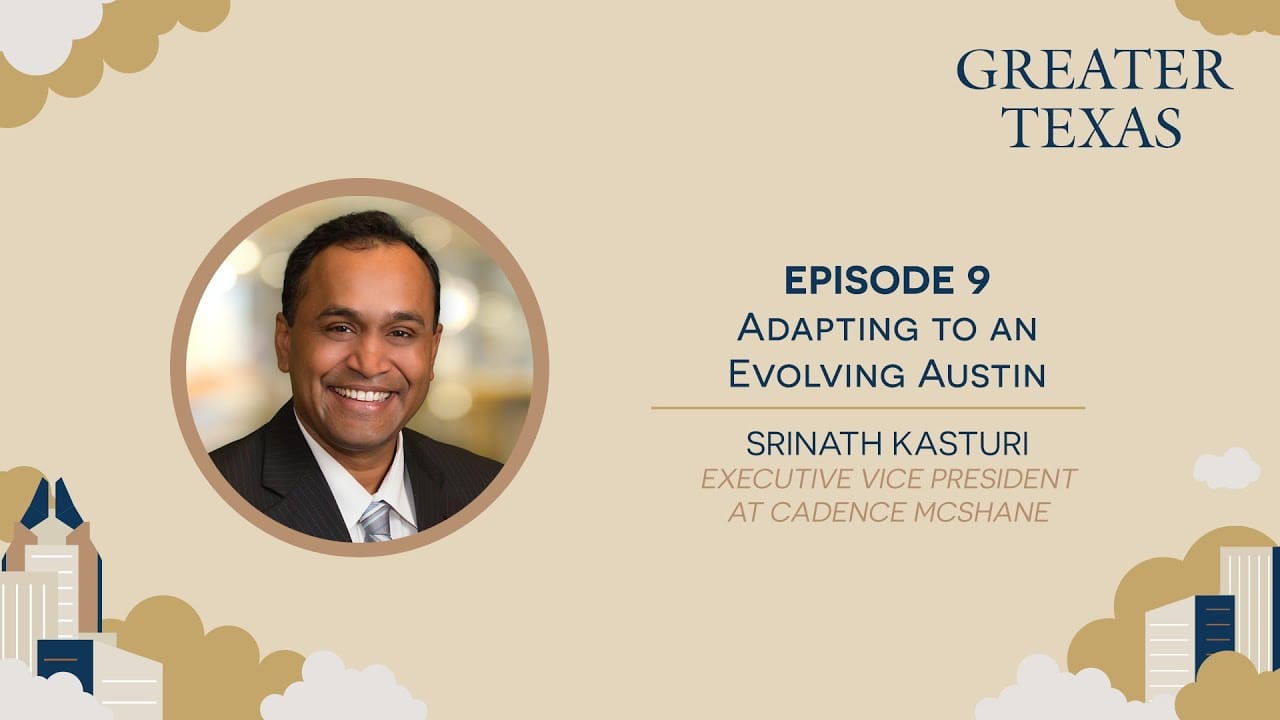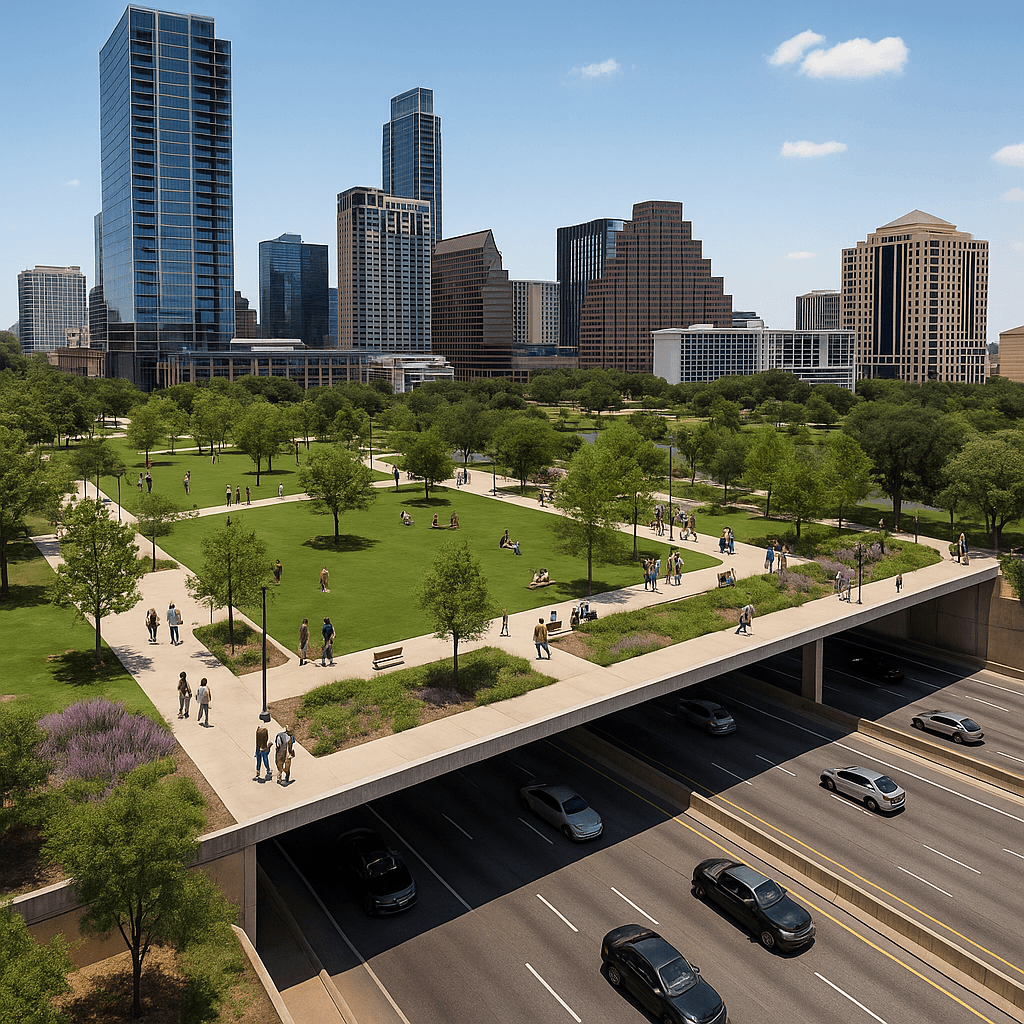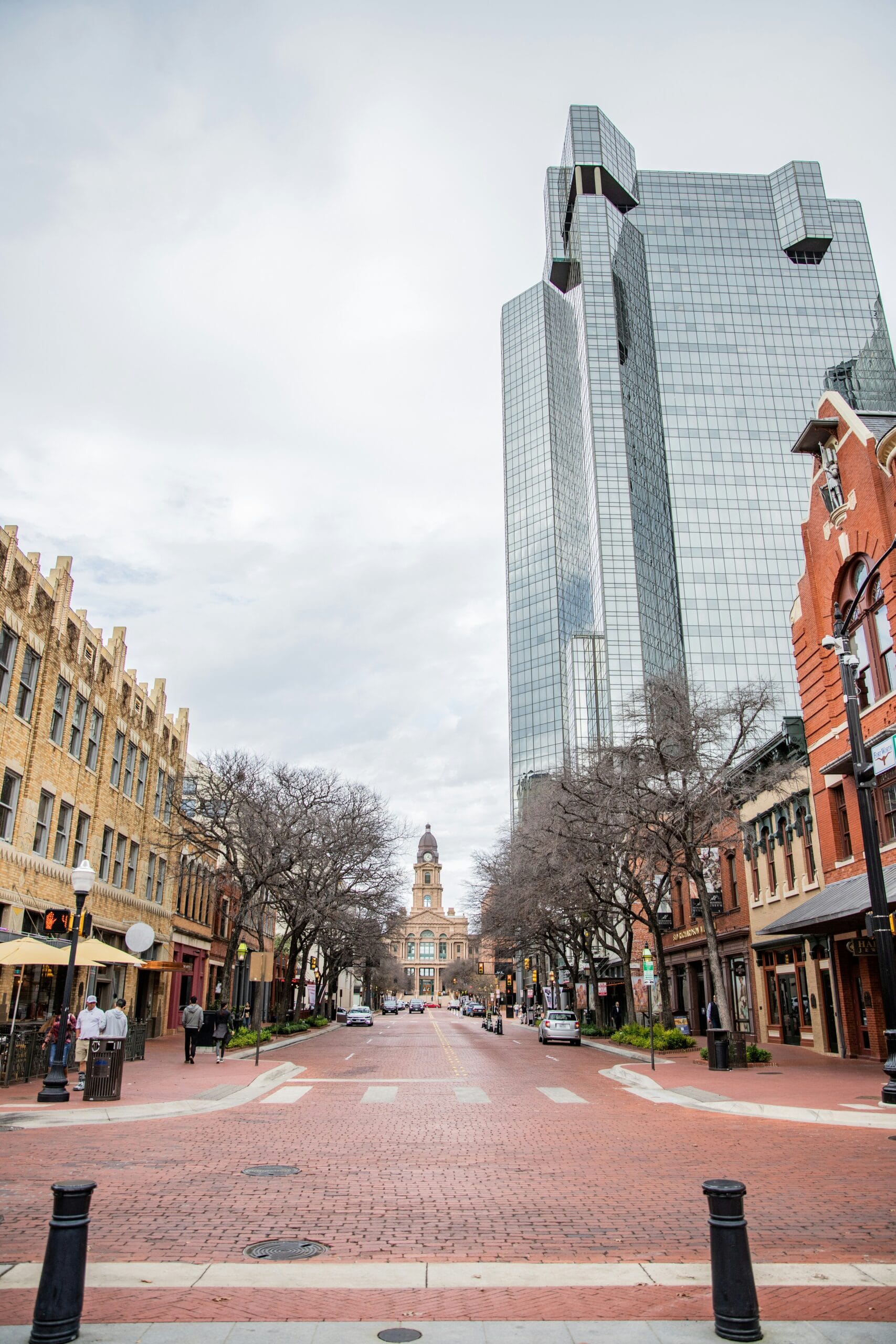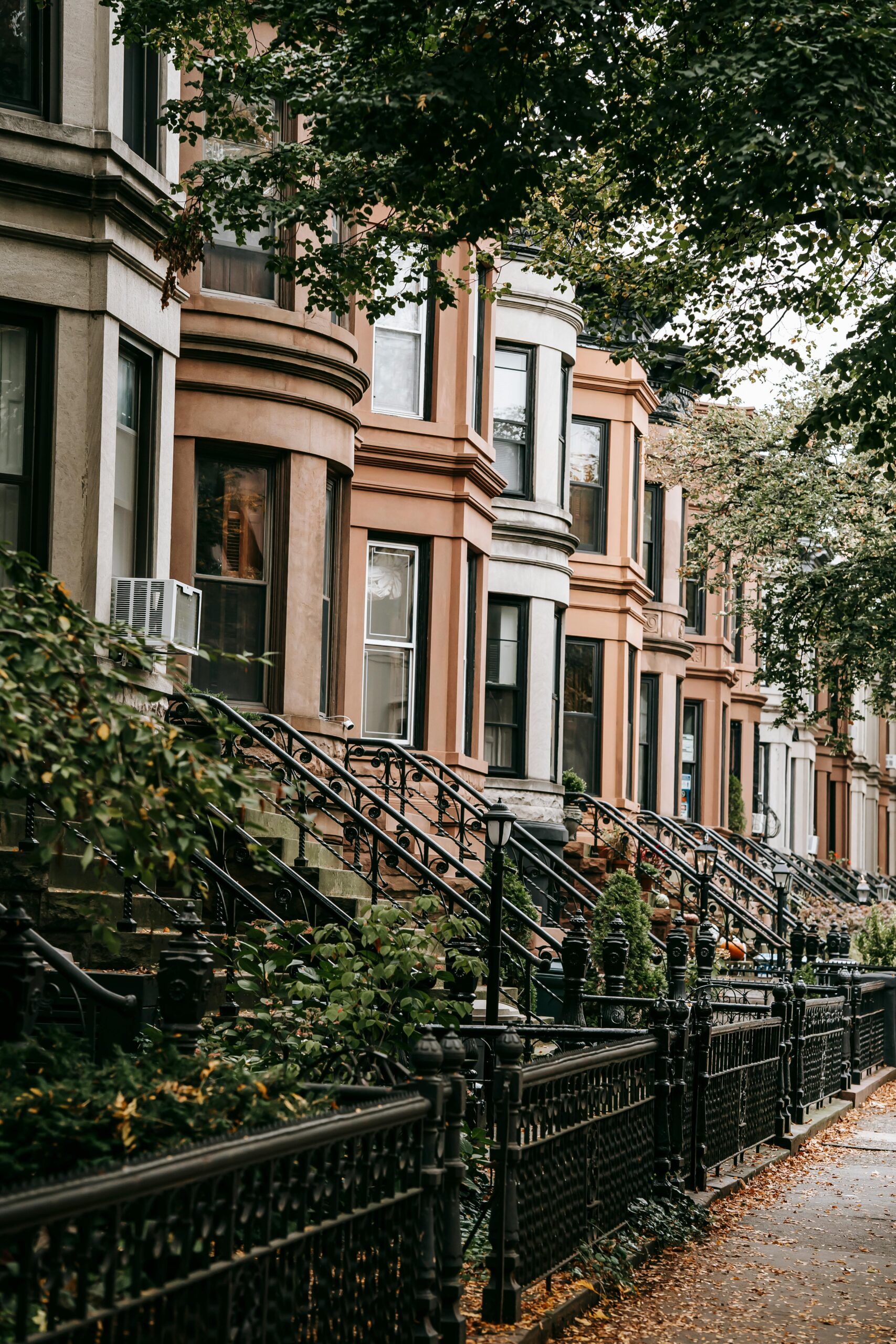This week, Srinath Kasturi joins in to talk about Austin’s rapidly-growing population and what developers, city planners, and everyone in between should do to accommodate Austin’s rise. Srinath is the Executive Vice President at Cadence McShane construction and shares in this episode how he pivoted his career from architecture to construction management—and ended up using both in his career. As the second fastest-growing US city, we also break down infrastructure, transportation, building approval, and more, getting closer to what will make Austin’s swift expansion sustainable.
Timecoded Guide:
[02:15] Srinath’s career start at Cadence McShane
[12:27] Industry growth in Austin
[16:41] Predicting the change in commodity prices
[19:01] Effects of the labor shortage
[21:49] Austin’s infrastructure growth
[25:51] City-level challenges in development
From architecture school to construction at McShane
It’s not everyday that you’ll meet someone who has spent their entire career with the company that gave them their first job. Srinath is one of the exceptions. He talks about how he went from studying architecture in India to getting a master’s in construction management in the states. Srinath also gives some background on his construction experience in India and lays out the stark differences between India and the US in architecture. The main difference between the two is population density—and Srinath knows this well. He explains later how more density can be worked in to Austin’s growth strategy.
“If you look at New York City, the density—I’m not talking about the buildings—but the density of New York City, most cities in India have that kind of density. You feel it.”
Have you seen in the industry a change at all in office construction since COVID?
The workplace, industry, and daily norms have all changed since COVID. Srinath gives perspective on, to what extent, COVID has affected his own industry. He says that, although higher rent increases revenue, it’s been a challenge as the number of tenants falls. Srinath mentions that it’s often easier to knock down a building and put up a new one instead of attempting to convert or repurpose an existing building. Srinath also says that COVID has affected the circulation of industry knowledge as experienced people have retired since the pandemic.
“We lost that institutional knowledge that we assumed in the next five years, that person would have translated over to somebody else, the next breed of professionals that come through. That’s created a gap in our industry and all industries, perhaps.”
What trends are stemming from the growth in Central Texas?
Sure, Texas is big but population-wise, regions of Texas are turning into sprawling cities. As developers keep up with the growth, infrastructure lags behind. Finding solutions to growth-related issues is an integral part of Srinath’s job. In the next 25 years, it’s projected that millions more will move to Texas. Srinath says that you can’t get there with 60-foot height restrictions. As buildings are made to last 40 years, he emphasizes that the current infrastructure and height limits are unsustainable with Austin’s projected growth.
“You bring in 2x the population, they got to live somewhere, it has to be affordable. So thinking about how these people will live and the quality of life matters. Music capital of the world, how the musician is going to make it if you don’t give them the opportunity to make a living, express their talents and everything like that. They can’t have a shelter to live in. It’s not possible. So I think the city has to make some shifts, some sensible decisions.”
What are some of the hurdles at the city level for construction?
Srinath says that, like in other industries, the city is short-staffed which creates issues as Austin’s city stretches outward and upward. He notes that, right now, it can take up to three years to get a building entitled to occupancy. He says that the city needs to form task forces that specialize and help the city plan for certain things—and that one can’t expect the city itself to plan it. Srinath adds that if there was an opportunity to fix these issues in the city, he would join in to make a difference.
“Bring in people, developers, former consortium of people that really live in Austin and want to make a difference. Bring them together. I would participate if there was an opportunity to make a difference. I think that’s what they need: some leadership, some assertive leadership that takes us in the right direction.”
———-
Links:
Keep up with Srinath on LinkedIn.
Visit the Cadence McShane website.
If you enjoyed this podcast, check out more episodes on Audible, iHeart, and Youtube.
Learn more about the Bukowski Law Firm and the Greater Texas Podcast on our website and Youtube channel.



